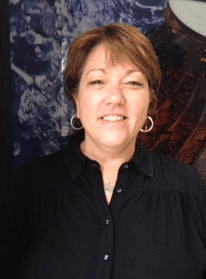Did you miss part 1 of our blog post on teaching like a champion? Click here to get up to speed!
As promised, here are more 5 techniques to help you teach all of your students, including those who are deaf and hard of hearing, like a champion!
- Technique 18: Check for Understanding. This is an on your feet method of data collection. Circulate around the classroom and gather data about how your students are doing. Observe, ask questions, and if you observe a gap in learning, do something about it right away. An intervention could be repeating the instruction or reteaching the material in a slightly different way. A student with hearing loss will benefit from the 1:1 feedback in close proximity to the teacher. The shorter the delay between recognizing a gap in learning and taking action to fix it, the more likely the intervention will be effective.
- Technique 19: At Bats. Repetition and practice of a skill is essential for students to achieve mastery. This is particularly true for students with hearing loss who may have missed part of the teacher’s instruction. Great lessons should always include many “at bats”. Once your student with hearing loss gets to the “You Do,” keep going until she can do it on her own.
- Technique 20: Exit Ticket. Want a quick tool to know if your student with hearing loss has mastered your lesson objective? Lemov calls this technique the final “at bat”. An exit ticket is a quick formative assessment consisting of a single question or one to three problems at the end of class that focus on the key part of the objective. This data will tell you how effective your lesson was and how to plan for the next one. You can start the next day’s lesson by analyzing the data with your students and re-teaching the Exit Ticket for those who need the additional practice.
- Technique 25: Wait Time. A student with hearing loss requires additional time to process a question and formulate a response. By waiting a few seconds after you ask a question, and before you ask a student to answer, you give your students a little time to tap into their ideas and give their best answer. Let your students know that you are going to give them some “think time.”
- Technique 28: Entry Routine. It’s the beginning of the school year and you are setting up your classroom learning system. Your classroom entry routine establishes the culture that learning is the essential function of your classroom. Greet your students and make your entry routine efficient, productive, academic and time-bound. Students should know where to sit, what to do with their homework, followed by a Do Now (Technique 29 sneak preview). The Do Now should be in the same place every day. The objective for the lesson, the agenda, and the homework should already be on the board. Teach and practice this routine until it is well-established. Students who are deaf or hard of hearing thrive in a classroom with predictability and consistent routines.
Learning in a regular education classroom can be challenging for students with hearing loss. Incorporating these techniques into your practice will benefit all students in your classroom as well as provide the intentional teaching and instructional supports that are critical for students with hearing loss. And don’t forget the most important technique, Number 46: The J-Factor. Create a high-achieving classroom full of enthusiasm, passion, energy, joy, humor, singing, and dancing and laughter. For a more detailed description of each technique and video demonstrations, refer to Teach Like A Champion: 49 Techniques That Put Students on the Path to College, and make every moment count in your classroom!
Lemov, Doug. (2010). Teach Like a Champion: 49 Techniques That Put Students on the Path to College. San Francisco, CA: Jossey-Bass.













